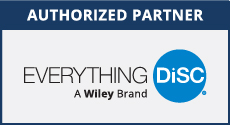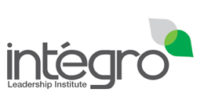People-Whispering Tip
“Wisdom stands at the turn in the road and calls upon us publicly, but we consider it false and despise its adherents.” ~ Kahlil Gibran
“The truth, of course, is that a billion falsehoods told a billion times by a billion people are still false.” ~ Travis Walton
“Constant development is the law of life, and a man who always tries to maintain his dogmas in order to appear consistent drives himself into a false position.” ~ Mohandas Gandhi
Dispelling the Myths about Employee Engagement: Focusing on What Matters
I recently read a provocative article about employment engagement in ATD’s March 2015 issue entitled “Employee Engagement: An Epic Failure?” I’m afraid the article underscored for me the confusion that exists in the marketplace about what employee engagement is and isn’t—not to mention its usefulness as a field.
The article danced around the edges of the question of causality meaning does the fact that a company has highly engaged employees (or high scores on employee engagement surveys) necessarily lead to productivity and profitability? It seems we can never get around the age old dilemma of “which came first, the chicken-or-the-egg?”
The author of the article challenged prevailing assumptions, which is always a wise and rigorous way to approach any body of knowledge.
First, I agree with the article in that it highlighted the fact that people don’t always mean the same thing when they talk about employee engagement. I like Kevin Kruse’s definition which is “employee engagement” is the emotional commitment the employee has to the organization and its goals.”
My definition of “employee engagement” refers to an employee work environment (including virtual workplaces) in which employees are motivated, excited, thoroughly involved and engrossed in their work and personal contribution such that they are willing to offer their energy and commitment to achieve the organization’s work goals as well as their own.
If you read my last ezine about the “Passion Deficit,” you will see that an employee can be passionate or engaged about the work they do each day but not about the organization in which they do it. In Kruse’s definition, he is talking about an emotional commitment which encompasses caring about both the work and the company as I am in my definition.
Further, there are four additional prevalent myths about employee engagement I would like to dispel here.
Myth #1: Employee engagement and happiness is increased primarily through monetary rewards and perks.
Making employees happy is different from helping them to be fully engaged. While employees might enjoy free massages, bringing their pets to work, tickets to sporting events or whatever else a company may come up with, this is not what really matters to people at work.
The Harvard Business Review issue (Jan.-Feb. 2012) with the cover theme of “The Value of Happiness: How Employee Well-Being Drives Profits” is about the real drivers of employee engagement such as providing decision-making discretion, sharing information, showing respect and offering performance feedback.
As I mentioned in the last ezine, Integro’s research also found similar results. Their research showed the four key drivers of engagement or employee passion were 1) Trust and Respect between management and employees, 2) Meaningful Work, 3) Honesty, and 4) Open Communication.
Myth #2: Employee engagement and employee satisfaction are the same thing.
Many companies conduct “employee satisfaction or employee opinion surveys.” Many of these surveys don’t address the real drivers of employee engagement or passion. The bar is too low and is not measuring what we really need in organizations today.
In other words, a “satisfied” employee might show up for the job and meet the requirements without complaint. However, that same “satisfied” employee might not bring the extra creativity and entrepreneurial mindset to the table if they are not passionate about the company as well as the job. If a passion deficit is present, they will likely take that call from the headhunter to get an extra 10% bump in pay by going elsewhere. That does not make Myth #1 true though as now we are measuring apples and oranges based upon a false premise.
The ATD article premise was that despite the impressive amount of research showing the correlation between engagement and positive business results, the cynics and skeptics may still say, “Maybe employees are just more engaged when their companies are growing, bonuses are large, and stock prices are climbing.” In other words, they side with the statisticians that “correlation is not necessarily causation.”
While that may be true, Kevin Kruse, an expert in the arena of employee engagement has tracked over 30 studies which show how engagement correlates to decreases in absenteeism, turnover, accidents, and defects while it also correlates to increases in customer service, productivity, sales, and profits.
These are pretty impressive correlation studies tied to positive business outcomes.
In a similar vein, some 50 years ago people made the same arguments about cigarette smoking only being correlated with and not causing lung cancer. Today the Surgeon General is more bold in claiming that cigarette smoking causes lung cancer although it certainly isn’t the only factor involved.
Myth #3: There are no studies showing that a causal link between employee engagement and profitability.
We have already established that many studies cite a correlation between caring and committed employees being more productive, giving better service, and even staying in their jobs longer. This leads to happier customers, who buy more and refer more often which in turns leads to higher sales and profits and increases in stock prices for public companies traded on an exchange.
If this is not enough evidence for you or your organization’s senior leaders, an important study published in the Journal of Occupational and Organizational Psychology (Landmark longitudinal study, using 755 retail bank employees and business unit metrics for a four year period) showed engagement had more impact on business results than vice versa. (Source: New insights into an old debate: Investigating the temporal sequence of commitment and performance at the business unit level) The outcome shows that organizational commitment has more impact on organizational performance than vice versa.
In other words, people are not just more engaged because their companies are growing and they are getting paid more money. Certainly those things are wonderful but they are red herrings.
Instead, the bottom line of this research is that job attitudes come first. Therefore, the leverage factor for managers or external consultants is in improving job attitudes in order to boost organizational performance and not the other way around.
Myth #4: Getting all employees engaged is the be-all-end-all way to ensure productivity and profitability.
I am always amused by how we humans tend to lose sight of the “forest for the trees” and get hung up on semantics or splitting hairs. Rather than spending time and energy on discussing correlation versus causality or the validity of employee engagement as a field, let’s recognize what really matters.
To paraphrase Oprah, what we do know for sure to create thriving, profitable, successful companies and workplaces is:
1) Employee engagement is the starting point and NOT the ending point.
2) All employees want and deserve respect.
3) Leaders (whether they are managers or not) need the leadership skills to build trust as well as the emotional intelligence to know how to do so.
To learn more and for assistance in cultivating healthy, engaged, emotionally intelligent leaders, teams and Responsibility-Based Cultures, please call us at 404-327-6330 or email me at Laura@lauraadavis.com.
DiSC® Assessment Application(s)
1) Webinar Replay for the “Building and Fostering a Cohesive Team: Your Ultimate Competitive Advantage”
Best-selling author Patrick Lencioni has joined forces with Wiley (formerly Inscape Publishing) to offer this excellent process for building effective teams.
Teamwork is the lifeblood of an effective organization. Unlocking the code to getting groups of people to work together in high-performing and joyous ways is the key to a profitable and sustainable corporate culture.
The process consists of an individual and team assessment based upon Lencioni’s time-tested, proven model. The accompanying Facilitator Kit walks you through his research-based model to uncover where your team’s strengths and areas for growth and development lie.
To take advantage of this well-designed, time-tested method to unleash your team’s potential, call our office at 404-327-6330 or email Laura@lauraadavis.com.
2) The Everything DiSC Sales Profile Report and Facilitation Kit
Everything DiSC® Sales teaches salespeople how to connect better with their customers. It can also be used in a customer service capacity to teach service professionals how best to connect with their customers.
The Everything DiSC® Sales Facilitation Kit allows trainers to provide a classroom training that uses online pre-work, engaging facilitation with contemporary video, and online follow-up to create a personalized learning experience. Participants learn how to read the styles of their customers. The result is salespeople who adapt their styles to connect better—and close more sales.
Everything DiSC Sales focuses on three vital areas:
- Understanding Your DiSC Sales Style
- Recognizing and Understanding Customer Buying Styles
- Adapting Your Sales Style to Your Customer’s Buying Style
Make the Program Work for You
Everything DiSC Sales is the most in-depth and easily customizable DiSC-based sales-training solution available.
Sales-specific, personalized content creates an in-depth learning experience. Modular design and online tailoring features allow you to design a customized program that’s right for your organization.
Click here for a Sample Everything DiSC Sales Profile.
Click here to purchase the Everything DiSC Sales Facilitation Kit.
3) The Coaching Clinic Workshop: Coaching Skills for Leaders and Managers
The Coaching Clinic is a two-day leadership development program designed to train managers, executives, leaders, and supervisors to use coaching skills in their work relationships. There is also a half-day version available for executives.
Developed by Corporate Coach U, this program allows participants to:
- Discover coaching as a powerful leadership and management development model.
- Experience and practice “state of the art” coaching techniques.
- Understand the structure and process of integrating a “Coach Approach” as a leader
- Apply the learning within the workplace right away.
Click here for more information.
4) The 8 Dimensions of Leadership: DiSC Strategies for Becoming a Better Leader by Jeffrey Sugarman, Mark Scullard, and Emma Wilhelm
 We all approach leadership from a unique starting point – a combination of our own psychological make-up, intelligence, training, and experience. When anyone strives to grow as a leader, they need to stretch their energy in new directions.
We all approach leadership from a unique starting point – a combination of our own psychological make-up, intelligence, training, and experience. When anyone strives to grow as a leader, they need to stretch their energy in new directions.
For example, a person may be promoted into a leadership role because of their outgoing nature and positive attitude. While this visionary style may prove inspiring, they might also need to develop their analytical side in order to be more successful at running a business.
The 8 Dimensions of Leadership Model described in the book is based on the DiSC model, a systematic way to understand the forces beneath the surface that drive our individual behavior.
In the last issue of this ezine, I promised to cover some of the lessons we can all learn from each of the 8 leadership styles: Pioneering, Energizing, Affirming, Inclusive, Humble, Deliberate, Resolute, and Commanding.
Let’s look at the strengths of the Humble Style of Leadership and the lessons we can learn from them.
First, let’s review the strengths of the Humble or “High SC” Leader. Humble leaders are able to recognize their mistakes, learn from others, give credit where credit is due, maintain their composure, and keep their personal egos in check.
The Strengths of Humble Leaders are that they are:
- Often able to head off potential problems with careful planning.
- Able to provide others with the tools necessary to do their work.
- Able to create a stable environment.
- Skilled at maintaining their composure, even under stress.
- Conscientious about reaching closure on projects and initiatives.
- Good at modeling a steady work ethic.
- Able to deliver accurate outcomes and expect others to do the same.
What can those of us who are not so naturally Humble learn from those with this predominant, natural leadership style?
The three lessons we can learn are:
- People need leaders to stay calm under fire.
- You need other people more than you think.
- Other people have needs that differ from your own.
The ultimate goal of understanding your leadership style is to broaden your repertoire beyond your comfort zone/default setting so that you can make the best choice of leadership style and behavior based upon the needs of any given situation.
There is a four step process for using this information to improve your leadership effectiveness as follows:
- Discover Your Primary Leadership Dimension.
- Learn about the Psychological Drivers, Motivations, and “Blind Spots” Typical of Leaders with Your Style.
- Reflect on What Really Matters Most in your Leadership Development Right Now.
- Learn Leadership Lessons in the Areas in Which You’d Like to Grow and Expand.
Stay tuned for future webinars and trainings which will delve into The 8 Dimensions of Leadership Model so you will know how to apply it for your own, and your team’s, leadership development needs.
For more on how to increase your organization’s effectiveness using the appropriate Everything DiSC profile and/or training materials for your unique needs, please call us at 404-327-6330 or email me at Laura@lauraadavis.com.
Transformational Coaching Tip: Becoming more Humble
Whether you are naturally a Humble style leader or not, here are some tips to help you build upon the strengths of this style.
Tips for Becoming More Humble:
- Maintain your composure by keeping things in perspective.
- Find another outlet for your fear and anger.
- Test your assumptions about the crisis in the grand scheme of things.
- Recruit any help you may need to stay emotionally on track either from within the organization or externally.
- Reflect on what you have to gain by truly listening to people at all levels of your organization.
- Create the time and space you’ll need to give listening to people throughout the organization the attention it deserves.
- Make the needs of your group a priority.
- Learn to appreciate the styles that are different from your own and try to anticipate the needs and limitations that might come with them.
- Check the emotional pulse of the people you work with on a regular basis.
- Take the time to truly listen to the less powerful people around you. You just might learn something.
For assistance in applying any of these best practices into your workplace for more powerful, effective results, feel free to call us at 404-327-6330 or email Laura at Laura@lauraadavis.com.










